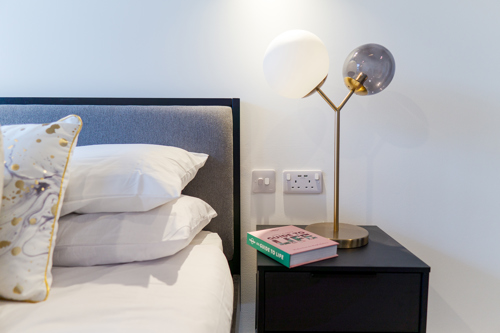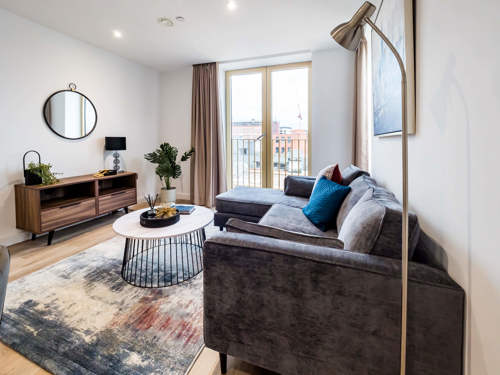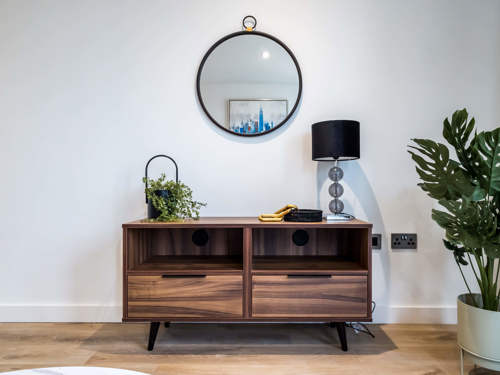As property management experts, we understand the importance of making informed decisions that maximise the potential of your rental property. One crucial decision that landlords often face is whether to let their property furnished or unfurnished. Both options have their pros and cons, so let’s delve into the different factors that can help you make the right choice.
- What’s the difference between furnished, unfurnished, and part-furnished?
- What are the pros and cons of a furnished property?
- What are the pros and cons of an unfurnished property?
What’s the difference between furnished, unfurnished, and part-furnished?
There’s no formal definition so the level of furnishing will always vary from property to property but the following generally applies:
1. Furnished
Furnished properties are typically equipped with all the necessary furniture, appliances, and basic amenities for tenants to move in comfortably. This may include:
- Beds
- Sofas
- Dining table and chairs
- Wardrobes
- Kitchen appliances (e.g., fridge, stove, microwave)
- Essential household items (e.g., curtains, lighting fixtures)
2. Unfurnished
An unfurnished property doesn't necessarily mean that it's completely empty. While these properties don’t tend to include any furniture or decorative items, they will typically include the essential fixtures such as kitchen cabinets and bathroom fixtures, as well as appliances such as a fridge, freezer, and cooker. Tenants are responsible for providing the rest of the appliances and their own furniture, allowing for an empty canvas that they can then personalise and furnish to their liking and preferences.
3. Part-furnished
Part-furnished properties fall somewhere in between furnished and unfurnished options. They typically include a limited selection of furniture or appliances, such as basic kitchen appliances, a washing machine, or essential bedroom furniture e.g., beds, but they won’t have all the furnishings that a tenant may need.
What are the pros and cons of a furnished property?
The pros of a furnished property
- Appeals to a broad spectrum of tenants in the rental market:
Furnished properties appeal to tenants who are looking for convenience and a hassle-free move such as busy professionals or students, for instance. By providing the necessary furniture, you eliminate the need for tenants to spend time and effort shopping for and arranging furniture - they can essentially move in and settle straight away.
- Potential for higher rental income:
A furnished property will often command higher rental rates compared to the same property unfurnished. By providing furniture and amenities, you can justify a premium rental price, potentially increasing your rental income and return on investment.
- Provides a marketing advantage:
Furnished properties can provide a marketing advantage in the rental market as they have the potential to stand out from the competition and appeal to prospective tenants who are searching for a fully equipped living space. There’s also the opportunity to showcase a well-furnished property by using attractive photos that can help to generate more interest and enquiries.
The cons of a furnished property
- Higher initial investment and maintenance costs:
Furnishing a property involves an upfront investment in purchasing furniture, appliances, and other essentials. Additionally, landlords are responsible for maintaining and repairing the provided items as fair wear and tear occur. These costs should be factored into your budget as a landlord.
- Potential damage and loss of items:
With furnished rentals, there is an increased risk of damage to furniture and appliances. Tenants may not take the same level of care as they would with their own belongings. Additionally, there is a possibility of theft or loss of valuable items, which may lead to insurance claims and additional expenses.
- Limited tenant flexibility and personalisation:
Some tenants prefer to bring their own furniture and personalise the space according to their taste and lifestyle. By offering a furnished property, you limit their flexibility and the ability to make the space their own. This may reduce the pool of potential tenants who prefer an empty canvas.
What are the pros and cons of an unfurnished property?
The pros of an unfurnished property
- Appeals to another pool of tenants:
By offering an unfurnished property, you open your rental opportunity to a pool of tenants that would prefer or would only consider this option. For instance, families, long-term renters, and individuals who already own their own furniture are more likely to be interested in unfurnished properties.
- Tenant personalisation:
Renting out an unfurnished property allows tenants to bring their own furniture and decor, creating a sense of ownership and personalisation. Some tenants may prefer to create a space that reflects their individual style and taste, making them more likely to stay longer and take better care of the property.
- Lower maintenance and replacement costs:
Unfurnished properties generally require less maintenance and fewer replacements compared to furnished ones. Without the responsibility of maintaining furniture and appliances, you can potentially save on repair costs and reduce the risk of damage caused by tenants. Tenants are more likely to take care of their own belongings, reducing the need for extensive repairs or replacements.
- Potentially longer tenancies:
Tenants who furnish a property themselves may feel more invested and attached to the space, and so tend to stay for longer. This is because they are more likely to stay in a space that they have personalised and spent time making their own. Longer tenancies translate to reduced turnover and increased stability in your rental income.

The cons of an unfurnished property
- Limited appeal to certain tenant groups:
While unfurnished properties have their advantages, they may not be attractive to certain tenant segments, such as students or young professionals seeking a hassle-free move. These individuals may not have their own furniture or the means to invest in it, making furnished properties a much more viable option for them.
- Potentially lower rental income:
Unfurnished properties typically command lower rental rates compared to if they were furnished. This is because tenants bear the responsibility of furnishing the property themselves. However, it's important to assess the local rental market and demand for unfurnished properties in your area to determine the potential rental income and market competition.
- Listing photos may not look as attractive:
Photos of empty rooms may not look as attractive or eye-catching to prospective tenants, or the photos may simply not do the property justice which could lead to less enquiries and viewings.

Renting out a property furnished has its advantages and considerations for UK landlords. It can attract a wider tenant market, potentially increase rental income, and offer convenience for tenants. However, landlords must carefully assess the costs, maintenance requirements, and potential limitations associated with furnishing a property.
Ultimately, the decision to rent out a property furnished or unfurnished should align with your target audience, local market dynamics, and financial goals. Carefully weigh the pros and cons and make an informed choice that maximises your rental property's potential.
At Northern Group, we partner with the best furniture providers to provide landlords with discounted furniture packs and a hands-off fully-furnished investment option. Our property management experts can offer you advice and more information on this - book a free valuation today.




